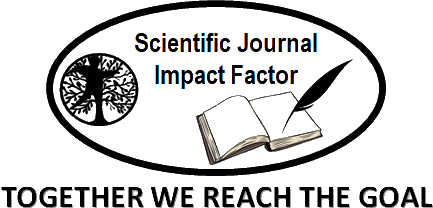Mouth breathing´s clinical modification with twin block to prevent obstructive sleep apnea
Abstract
Introduction: Breathing is a vital function of the body. When this function is carried out throughout the mouth, extraoral, intraoral, functional, postural psychosocial, and physiological changes begin to exist. Among the physiological alterations is obstructive sleep apnea syndrome.
Objective: To verify the modification of the clinical characteristics and the reduction of the symptoms in mouth-breathing patients to reduce the possibility of suffering from obstructive sleep apnea syndrome with the use of the twin blocks.
Methods: A quasi-experimental study of a single group of patients was carried out in the Orthodontics department at the La Vigía teaching dentistry clinic from June 2020 to June 2022. The universe of investigation consisted of 9 mouth-breathing patients who presented obstruction of the upper airways, between 12 and 18 years of age. The research was conceived in three stages: diagnosis and data collection; therapeutic intervention; information processing.
Results: 66.7 % of the children participating in the study were found in the age group of 12 to 14 years and the male sex prevailed. After 12 months of treatment, more than 55 % of the patients had achieved and overjet of 0-3mm and a 1/3 of the crown. Most symptoms related to obstructive sleep apnea syndrome decreased, and snoring and hyperactivity persisted in 33.3 % of the sample.
Conclusions: The application of the functional twin block device managed to significantly reduce overjet and overbite in more than half of the patients, as well as the symptoms that made them susceptible to suffering from obstructive sleep apnea syndrome.
DeCS: SLEEP APNEA, OBSTRUCTIVE/physiopathology; RESPIRATORY DISTRESS SYNDROME; RESPIRATORY PROTECTIVE DEVICES; CHILD; MOUTH BREATHING.
Downloads
References
2. Basheer B, Hegde KS, Bhat SS, Umar D, Baroudi K. Influence of Mouth Breathing on the Dentofacial Growth of Children: A Cephalometric Study. J Int Oral Health [Internet]. 2014 Nov-Dic [citado 12 Dic 2021];6(6):50-55. Disponible en: https://www.ncbi.nlm.nih.gov/pmc/articles/PMC4295456/
3. Collet S, Vande Vannet B, Watelet JB, Gordts F. Different aspects of respiration: relationships between the upper and lower respiratory tracts, and the middle ear cleft, nasal versus oral breathing. B-ENT [Internet]. 2012 [citado 21 Dic 2021];8(Suppl 19):21-25. Disponible en: https://www.academia.edu/47573800/Different_aspects_of_respiration_relationships_between_the_upper_and_lowerrespiratory_tracts_and_the_middle_ear_cleft_nasal_versus_oral_breathing
4. Galetti SC. Respirar por la boca: consecuencias, prevención y tratamiento. 3ra ed [Internet]. Santander: Fundación Iberoamericana Down 21; 2016 [citado 21 Dic 2021]. Disponible en: https://www.down21.org/libros-online/respirarporlaboca/respirar_por_la_boca_down21.pdf
5. Orozco Cuanalo L, Castillo González LM, Bribiesca García ME, González de la Fuente MV. Maloclusiones dentales y su relación con la respiración bucal en una población infantil al oriente de la Ciudad de México. Revista Especializada en Ciencias de la Salud [Internet]. 2016 [citado 21 Dic 2021];19(1):43-7. Disponible en: https://www.medigraphic.com/pdfs/vertientes/vre-2016/vre161f.pdf
6. Thomé Pacheco MC, Ferreira Casagrande C, Pacheco Teixeira L, Silveira Finck N, Martins de Araújo MT. Guidelines proposal for clinical recognition of mouth breathing children. Dental Press J Orthod [Internet]. 2015 Jul-Ago [citado 12 Dic 2021];20(4):39-44. Disponible en: https://www.ncbi.nlm.nih.gov/pmc/articles/PMC4593528/
7. Srinivasa H, Shetty C, Sam G, Chakkarayan J, Maroli S, Vijayan V. Immediate Postural Responses to Total Nasal Obstruction: A Cephalometric Study. J International Oral Health [Internet]. 2016 [citado 12 Dic 2021];8(1):112-8. Disponible en: http://www.ispcd.org/userfiles/rishabh/V8I1/V8I1A22.pdf
8. Soto Llanos L, Calero Escobar JA. Caracterización de hábitos orales en una muestra poblacional de Santiago de Cali, Colombia entre los años 2005 y 2012. Rev Gastrohnup [Internet]. 2013 May-Jun [citado 04 Nov 2021];15(2 Suppl 1):S8-S12. Disponible en: https://bibliotecadigital.univalle.edu.co/bitstream/handle/10893/6010/2%20caracterizacion.pdf?sequence=1&isAllowed=y
9. Lagana G, Masucci C, Fabi F, Bollero P, Cozza P. Prevalence of malocclusions, oral habits and orthodontic treatment need in a 7- to 15-year-old school children population in Tirana. Prog Orthod [Internet]. 2013 [citado 21 Dic 2021];14: 12. Disponible en: https://www.ncbi.nlm.nih.gov/pmc/articles/PMC4394386/
10. Ramos-Ríos JA, Ramírez-Hernández E, Vázquez-Rodríguez EM, Vázquez-Nava F. Repercusiones en la salud bucodental asociadas con el asma en niños de 6 a 12 años de edad. Revista Alergia México [Internet]. 2017 Jul-Sep [citado 18 Abr 2020];64(3):270-6. Disponible en: https://revistaalergia.mx/ojs/index.php/ram/article/view/247
11. Jorge Jorquera A, Gonzalo Labarca T, Jorge Dreyse D, Constanza Salas C. Diferencias clínicas en pacientes con apnea obstructiva del sueño de carácter postural. Rev chil enferm respir [Internet]. 2017 Mar [citado 12 Ene 2020];33(1). Disponible en: https://scielo.conicyt.cl/scielo.php?script=sci_arttext&pid=S0717-73482017000100003&lng=es
12. Santamaría A, Fredes F. Repercusiones de la roncopatía y respiración bucal en el crecimiento facial. Rev Otorrinolaringol Cir Cabeza Cuello [Internet]. 2017 Mar [citado 13 Dic 2021];77(1). Disponible en: https://www.scielo.cl/scielo.php?script=sci_arttext&pid=S0718-48162017000100015
13. Torres Molina A. Prevalencia de los trastornos respiratorios asociados al sueño en escolares. Medisur [Internet]. 2012 Mar-Abr [citado 13 Dic 2021];10(2). Disponible en: http://scielo.sld.cu/scielo.php?script=sci_arttext&pid=S1727-897X2012000200002
14. Flores F. Apneas obstructiva del sueño en niños. Rev Latinoamericana de Ortodoncia y Odontopediatría [Internet]. 2017 [citado 21 Dic 2019]. Disponible en: https://www.ortodoncia.ws/publicaciones/2017/art-46/
15. Escobar-Córdoba F, Echeverry-Chabur J. Aspectos en la responsabilidad legal y laboral en el síndrome de apnea-hipopnea obstructiva del sueño (SAHOS). Rev fac med [Internet]. 2017 Dic [citado 12 Ene 2020];65(Suppl 1). Disponible en: http://www.scielo.org.co/scielo.php?script=sci_arttext&pid=S0120-00112017000500149&lng=en
16. Castro S, Segall D, Cardemil F. Cirugía transoral robótica en síndrome de apnea e hipoapnea obstructiva del sueño. Rev Otorrinolaringol Cir Cabeza Cuello [Internet]. 2021 Sep [citado 13 Dic];81(3). Disponible en: https://www.scielo.cl/scielo.php?script=sci_arttext&pid=S0718-48162021000300459&lng=es
17. Santamaría-Villegas A, Manrique-Hernandez R, Alvarez-Varela E, Restrepo-Serna C. Effect of removable functional appliances on mandibular length in patients with class II with retrognathism: systematic review and meta-analysis. BMC Oral Health [Internet]. 2017 [citado 12 Feb 2020];17:52. Disponible en: https://www.ncbi.nlm.nih.gov/pmc/articles/PMC5289049/
18. Fernández Ysla R, Pérez López M, Otaño Laffitte G, Delgado Carrera L. Cambios faciales y de tejidos blandos en pacientes con síndrome de clase II división 1 tratados con bloques gemelos. Rev cuba estomatol [Internet]. 2005 May-Ago [citado 12 Feb 2020];42(2). Disponible en: http://scielo.sld.cu/scielo.php?script=sci_arttext&pid=S0034-75072005000200004
19. Verdecia Carballo M, Torres Armas L, Ferreiro Marín A. Modificaciones de las vías aéreas en pacientes respiradores bucales tratados con bloques gemelos. Revista Latinoamericana de Ortodoncia y Odontopediatría [Internet]. 2019 [citado 26 May 2020]. Disponible en: https://www.ortodoncia.ws/publicaciones/2019/art-26/
20. García Molina GI. Etiología y diagnóstico de pacientes respiradores bucales en edades tempranas. Revista Latinoamericana de Ortodoncia y Odontopediatría [Internet]. 2011[citado 12 Feb 2020]. Disponible en: https://www.ortodoncia.ws/publicaciones/2011/art-18/
21. Clark WJ. Tratamiento funcional con bloques gemelos. Aplicaciones en ortopedia dentofacial. Madrid: Harcort Brace; 1998.
22. Morales-Blanhir JE, Valencia-Flores M, Lozano-Cruz OA. El síndrome de apnea obstructiva del sueño como factor de riesgo para enfermedades cardiovasculares y su asociación con hipertensión pulmonar. Neumol Cir Torax [Internet]. 2017 Ene-Mar [citado 12 Ene 2020];76(1):51-60. Disponible en: https://www.medigraphic.com/pdfs/neumo/nt-2017/nt171i.pdf
23. Gandhi V, Mehta F, Joshi H. Treatment of Class II Malocclusion and Impacted Canines with Two-phase Orthodontic Treatment. Contemp Clin Dent [Internet]. 2017 Ene-Mar [citado 12 Dic 2019];8(1):161-6. Disponible en: https://www.ncbi.nlm.nih.gov/pmc/articles/PMC5426153/
24. Barrios Felipe L, Puente Benítez M, Castillo Coto A, Rodríguez Carpio MA, Duque Hernández M. Hábito de respiración bucal en niños. Rev Cubana Ortod [Internet]. 2001 Ene-Jun [citado 02 Ene 2020];16(1). Disponible en: https://www.imbiomed.com.mx/articulo.php?id=4402
25. Herrero Solano Y, López Mendoza A, Arias Molina Y, Torres Arévalo J, Ros Santana M. Modificaciones esqueletales y de autoestima con bloques gemelos. Multimed [Internet]. 2019 Marzo-Abril [citado 17 Jul 2022];23(2). Disponible en: http://scielo.sld.cu/scielo.php?script=sci_arttext&pid=S1028-48182019000200310
26. Aminian A, Azimzadeh SS, Rahmanian E. Cl II Malocclusion Treatment, Using the Modified Twin Block Appliance Coordinated with Fixed Orthodontics in a Postmenarche Patient. Case Rep Dent [Internet]. 2017 [citado 12 Dic 2019];2017:2525374. Disponible en: https://www.ncbi.nlm.nih.gov/pmc/articles/PMC5405362/
27. Guedes de la Torre KM. Modificaciones clínicas del activador de Klammt en respiradores bucales susceptibles a la apnea del sueño. Congreso Internacional Estomatología 2020 (Virtual) [Internet]. La Habana: Universidad de Ciencias Médicas de La Habana; 2020 [citado 12 Feb 2022]. Disponible en: https://www.google.com/url?sa=t&rct=j&q=&esrc=s&source=web&cd=&cad=rja&uact=8&ved=2ahUKEwjA2_7vkMz6AhU_VTABHamwBEcQFnoECBQQAQ&url=http%3A%2F%2Fwww.estomatologia2020.sld.cu%2Findex.php%2Festomatologia%2F2020%2Fpaper%2Fdownload%2F703%2F176&usg=AOvVaw2W8sy4JLbyghIFQzyfgxBQ
28. Ramos Laucraft A, Expósito Martin II, Altunaga Carbonell AM, Cuan Corrales M. Aplicación del bionator en respiradores bucales para reducir el riesgo de padecer apnea del sueño. Congreso Internacional Estomatología 2020 (Virtual) [Internet]. La Habana: Universidad de Ciencias Médicas de la Habana; 2020 [citado 17 Jul 2022]. Disponible en: http://www.estomatologia2020.sld.cu/index.php/estomatologia/2020/paper/view/710/408
29. Cerero Omelchuk I, Puig Ravinal LE, Romero Zaldívar E. Modificaciones clínicas y cefalométricas en pacientes clase II división 1 tratados con bloques gemelos. Arch méd Camagüey [Internet]. 2009 May-Jun [citado 17 Jul 2022];13(3). Disponible en: http://scielo.sld.cu/scielo.php?script=sci_arttext&pid=S1025-02552009000300008
30. Ringler F, Gajardo P. Síndrome de apnea obstructiva del sueño persistente en niños adenoamigdalectomizados: artículo de revisión. Rev Otorrinolaringol Cir Cabeza Cuello [Internet]. 2021 Mar [citado 13 Dic 2021];81(1). Disponible en: https://www.scielo.cl/scielo.php?pid=S071848162021000100139&script=sci_arttext&tlng=en













